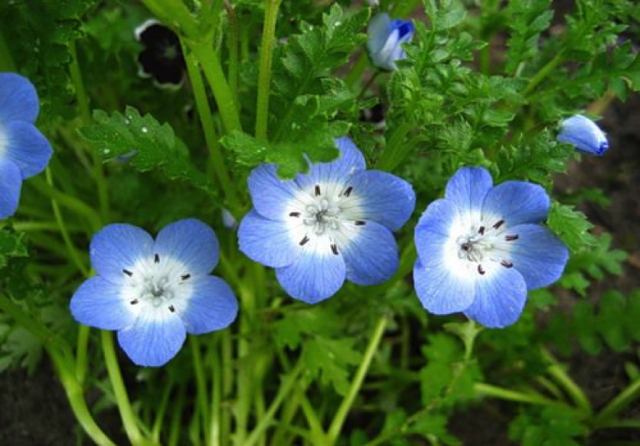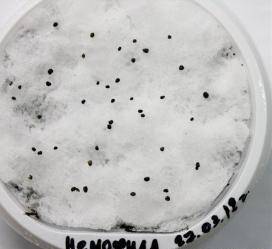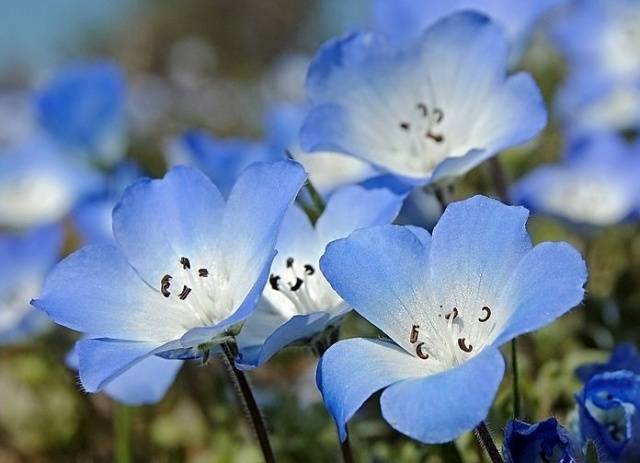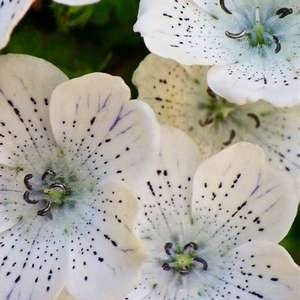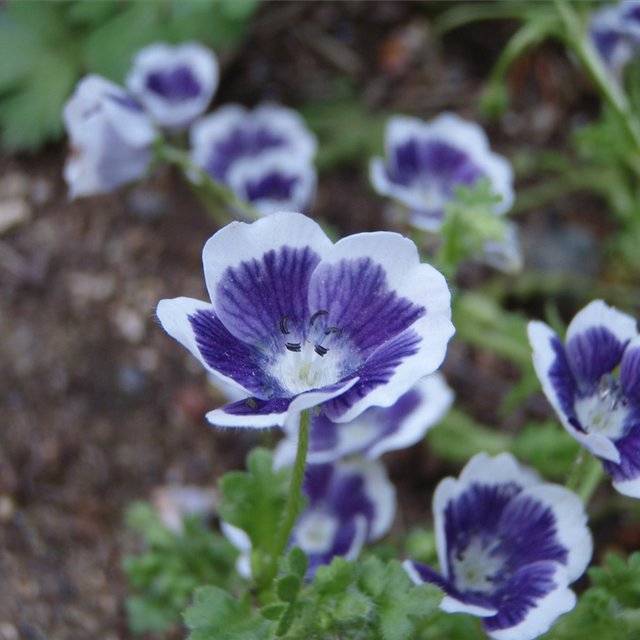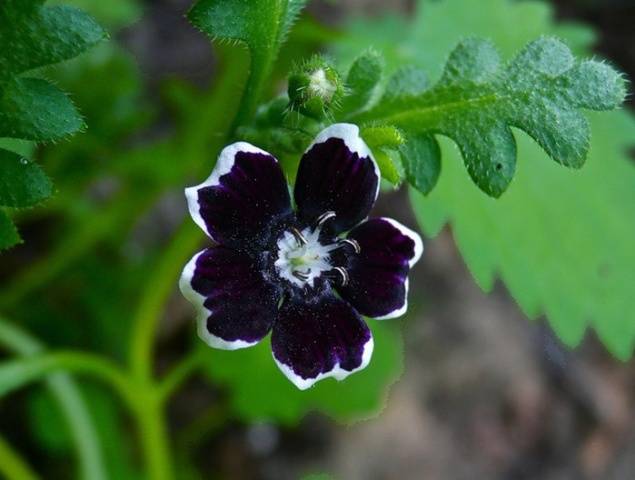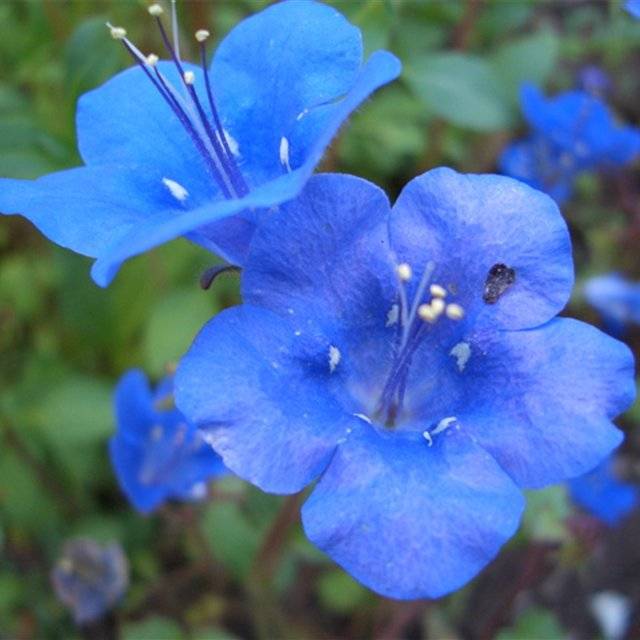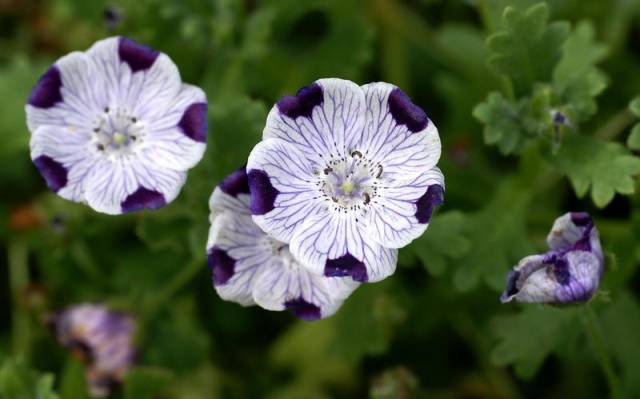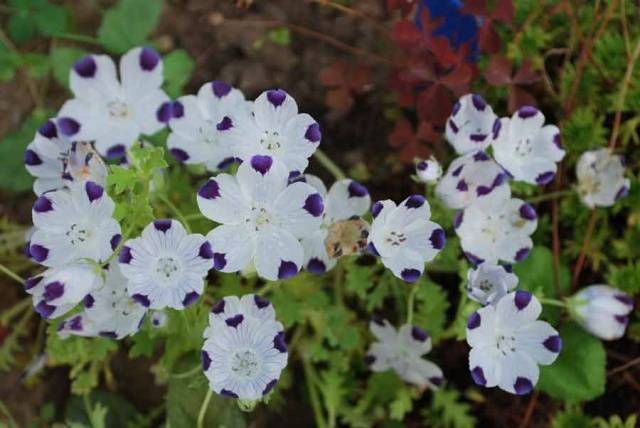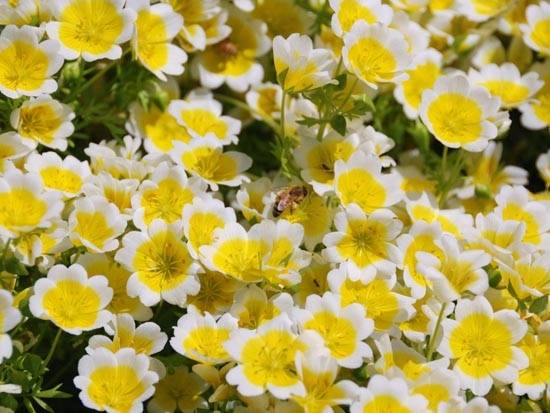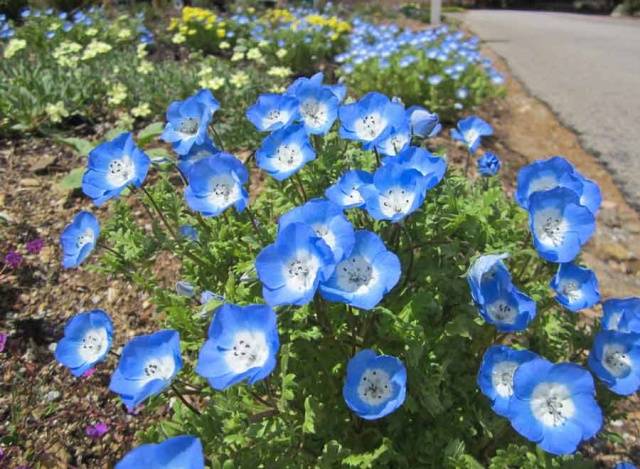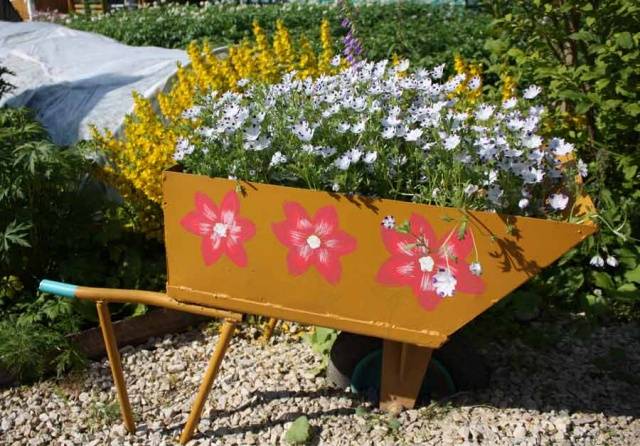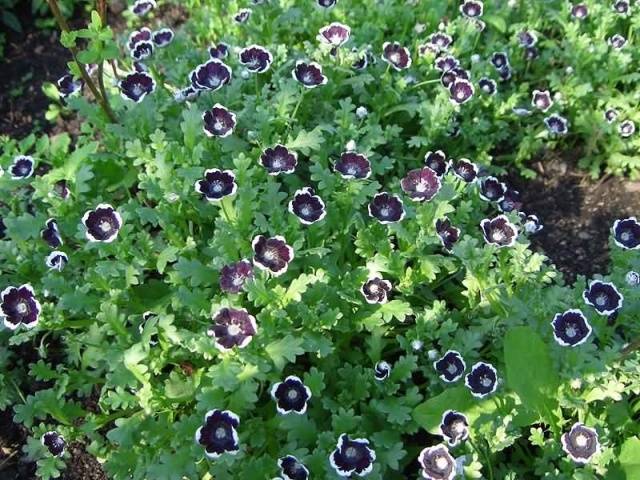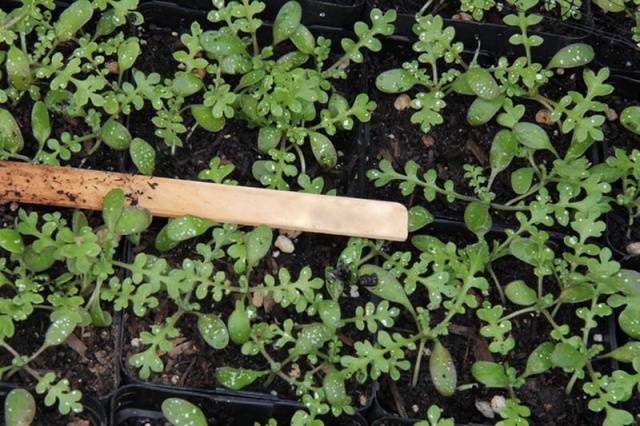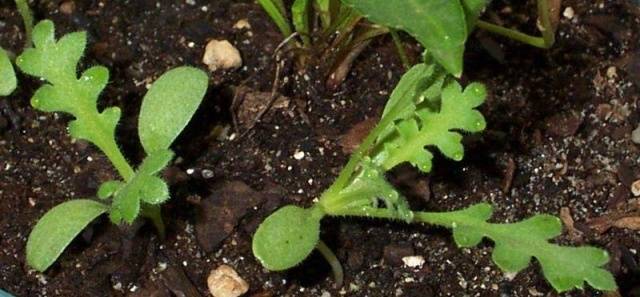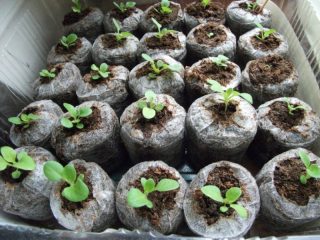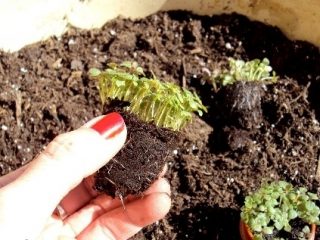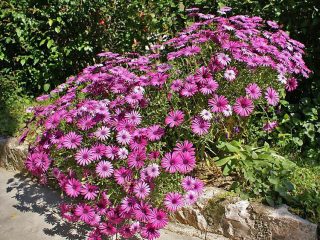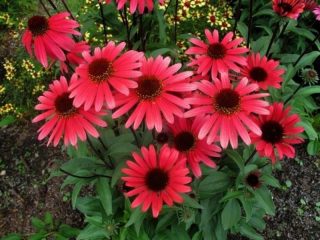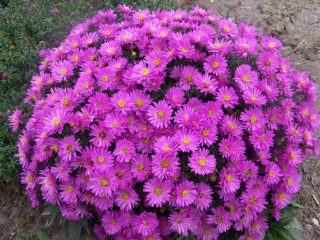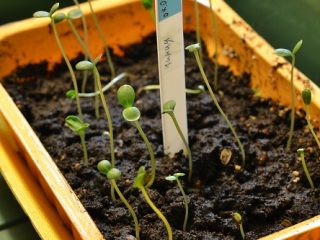Content
There are many unpretentious flowering plants in the world that, until recently, were not at all known to Russian flower growers. Among them can be called a guest from the North American continent - nemophila. This flower, of course, does not pretend to compete with gladioli, lilies and roses, because it is just an annual. And even against the background of popular bright handsome summer men, like marigolds, snapdragon, annual phlox or petunias, nemophila looks inconspicuous. But she has a bunch of other advantages and one of the main ones - cold resistance and even frost resistance. This allows you to freely start growing nemophila from seeds even in those regions of Russia that are famous for long harsh winters and short cool summers. In addition, nemophila has a discreet, but very attractive appearance, it is not for nothing that she was nicknamed "American forget-me-not" for some resemblance to this charming spring flower.
Thus, already from the name, the tendency of nemophila to grow in semi-shady places is obvious. This is not surprising, because in nature, these flowers grow in carpets on the moist slopes of the mountains of the states of California and Oregano under the canopy of rare trees.
The article will describe in detail both the process of growing nemophila from seeds, as well as the features of caring for a flower, and provides photos of its various varieties.
Description of the plant
The genus Nemofila belongs to the Borachnikov family. There are only about 11 species in it, and today about 100 varieties of this cute flower are known.
- Nemophila is an annual herb in height reaching no more than 25-30 cm.
- Fleshy brittle stems branch well, often spread along the ground, forming loose carpets and in places raised.
- The leaves are pubescent, pinnately-lobed, and look decorative by themselves.
- The flowers of the nemophila are quite large for such a low-growing plant, in diameter they can reach from 3 to 5 cm.
- The shape of the flowers is in the form of a wide open bell, they do not grow in inflorescences, but one by one, on rather long peduncles from the axils of the leaves.
- No pronounced aroma is observed in nemophila flowers.
- The corolla can be white, blue, blue or purple, often with specks.
- The fruits are hairy capsules of ovoid-spherical shape, 3-6 mm in size.
- Nemophila seeds are medium-small in size, there are about 400 pieces in one gram. They are ovoid, slightly wrinkled, with a small appendage at the end.
Most popular varieties
In culture, basically two species are known: Nemophila Menzis and Nemophila spotted.
In the video below you can see all the different photos of different varieties of nemophila.
Nemophila Menzisa has been known in culture since 1833. Although it grows abundantly in the wild in the California mountains, it is popular as a garden groundcover throughout America. The Americans gave her the cute name "baby blue eyes". In the wild, its height does not exceed 15 cm. Cultivars may be somewhat taller and have larger flowers. In Europe, it is known not so long ago.
There are many garden forms of Nemophila Menzis:
- Coelestis is one of the most popular and charming Nemophila varieties with sky-blue petals and a white heart.
- Atomaria or Snustorm - the color of the flowers is pure white, but the petals are speckled with tiny black specks.
- Oculata - with dark or purple spots at the base of the petals and a white edging.
- Discoidalis or Penny Black is also a very popular variety with velvety flowers of deep purple almost black color with a white edging.
- There are varieties of nemophila with both pure white and pure blue petals without streaks and specks.
Nemophila spotted got its name for the purple spots symmetrically located on the edges of the petals. The color of the flowers also gave rise to the local name of the plant - "five spots" (five spots). It lives in the wild mainly on the slopes of the Sierra Nevada mountains in the USA in fir and pine forests and in pastures.
As a garden flowering culture, spotted nemophila became known a little later, from 1848.
Popular varieties:
- Barbara - with pronounced blue strokes on a white background of petals.
- Ladybug - almost white petals with barely noticeable strokes.
Combination with other colors and use in the garden
Nemophila will be great to combine in the garden with many perennial or annual low-growing plants.
Note that Nemophila is often confused with another charming short herbaceous annual from North America - Limnantes. This flower, like nemophila, has not yet received widespread distribution in Russia, and even belongs to a completely different family. Nevertheless, their common origin and similar growing conditions were somewhat akin to them. In addition, the shape of their flowers is also similar. But the coloring of Limnantes is completely different - it is lemon-white.
But in the garden, these two plants will go well with each other, creating contrasting compositions in flower beds or on flowering lawns.
Also, nemophila will look good on flower beds or borders along with petunias, lobelia, low escholzia.
Theoretically, it can be placed in joint plantings with luxurious tall flowers, such as roses, gladioli, dahlias and others, but in this case, nemophila will look better at the very edge of the plantings, bordering them.
Due to its unpretentious disposition, nemophila can be used everywhere in the garden. Given that very few annuals tolerate shady conditions, it can be planted in conditions where other flowers cannot grow at all. If pines grow on your site, then nemophila will help create a beautiful flowering meadow under them.
Very often it is used for planting along paths or along the borders of a plot with a lawn. If you plant, in this way, nemophil varieties of different shades, then you can create a composition that resembles sea waves.
Nemofila seems to be specially created for planting on rockeries and near artificial reservoirs.
And, of course, the plant can decorate a variety of hanging baskets and vertical compositions, forming real waterfalls of greenery with numerous flowers. They will look especially impressive in shady courtyards, where rarely any flowers will agree to bloom profusely.
Growing from seeds
Nemophila, like many annuals, is propagated exclusively by seeds. Given its ability to withstand small frosts, its seeds can be sown directly in open ground starting in April, depending on the weather and climatic conditions in your area. For the conditions of central Russia, the dates in late April-early May are more suitable, because the earth should completely thaw by this time. Seedlings appear on average 10-15 days after sowing, seed germination is good, reaching 90%. Plants bloom in about 1.5-2 months after germination.
Seeds of nemophila are sown in grooves or holes to a depth of 3 to 5 cm, depending on the composition of the soil. On light sandy soils, you can sow up to 5 cm, and on heavy loams - no deeper than 3 cm.After the emergence of seedlings, the plants are thinned so that about 10-15 cm remains between them.This distance is enough for the plants to form a continuous flowering carpet ...
Nemophila plants bloom profusely, but for a relatively short time, about two months. In order to prolong flowering, you can either sow the seeds every 2-4 weeks, or around the middle of summer, make a formative pruning of the bushes, which stimulates branching and increases the number of buds that will bloom closer to autumn.
By the way, if you want the nemophila bloom to peak at the end of summer - autumn, you can sow seeds in a chosen place in June.
But if you want to see a blooming nemophila as early as possible, then you can try to grow it from seedlings. Just be sure to take into account that the plant can hardly tolerate any transplant, therefore it is advisable to sow it in separate pots at once, several pieces at a time. And subsequently transplant to a permanent place of growth, trying to minimize trauma to the root system of the flower.
It is best to grow nemophila seedlings in a greenhouse, greenhouse or on a balcony. It may be too hot in the room and will need abundant regular watering.
But when sowing nemophila seeds for seedlings in March, you can see its flowering by early summer. You can also plant seedlings in the ground at the earliest possible date - as soon as the ground warms up and thaws.
By the way, nemophila reproduces well by self-seeding. It is enough to plant one bush and next summer a whole clearing of blue and white color can grow in this place. The seeds of this flower can be sown before winter.
Care features
After sowing, the most important thing is to keep the soil moist. In general, for all the unpretentiousness of the nemophila, only one thing can destroy it - insufficient watering. With insufficient watering, especially in hot weather, the plants first stop blooming, and in severe drought they may die. Therefore, in order to preserve moisture in the soil, it is recommended that a week or two after the emergence of seedlings, thoroughly mulch the soil around the sprouts of nemophila with a layer of several centimeters with any organic material. Mulch will play another important role - it will protect the soil near the plant roots from overheating. Indeed, nemophila also reacts sharply negatively to overheating of the soil, which, of course, affects flowering. It is for this reason that this flower does not always thrive in the arid southern regions. True, it should be borne in mind that plants also cannot grow in a swamp, since their roots can rot.
The composition of the soil for growing nemophila does not matter, it can adapt to any type of soil. The main thing is that they are well drained.
On rich soils, the flower does not need feeding at all. If you grow the plant in containers, hanging pots or on depleted soils, then during the entire growing season, at least three additional fertilizing is required - a month after germination, during budding and during the flowering period.
Pests and diseases usually bypass the nemophila. Apparently, they have not yet had time to get used to the peculiar taste and appearance of the American guest.
Nemophila is a very interesting and unpretentious flower of truly universal use. You can grow it effortlessly almost anywhere on your plot. She only needs regular watering, without which, in principle, no plant can survive.
